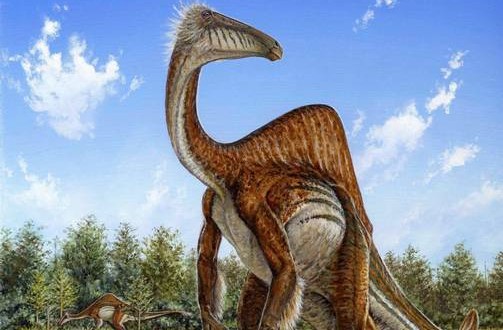50 years after the discovery of gigantic arms of an unknown dinosaur in the Gobi desert, researchers have unearthed something that may finally identify just what kind of dinosaur those arms belonged to.
Scientists at the Korea Institute of Geoscience and Mineral Resources and the Mongolian Academy of Sciences were able to create an image of the dinosaur after studying bones that had been missing for years, Bloomberg reports. The missing bones had been sold on the black market to private collectors. Fragments of the dinosaur’s arm bones were first discovered in 1965, and the species was named for its “terrible hands.”
Thomas Holtz, a paleontologist at the University of Maryland, told Bloomberg that the Chimera-like dinosaur was “peculiar.” Its oddities had their uses, though: The Deinocheirus mirificus used its tongue to “suction fish and plants” from lakes and ponds, since the dinosaur lacked teeth. Its beak, meanwhile, allowed it to eat plants. As for its stature — the dinosaur was 16 feet tall and 36 feet long — the scientists suspect the Deinocheirus mirificus grew to a large size to avoid being eaten.
Holtz added that the researchers will use the findings on the dinosaur “to better understand ancient ecology,” Bloomberg notes.
Agencies/Canadajournal
 Canada Journal – News of the World Articles and videos to bring you the biggest Canadian news stories from across the country every day
Canada Journal – News of the World Articles and videos to bring you the biggest Canadian news stories from across the country every day



